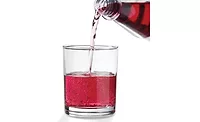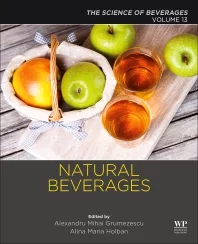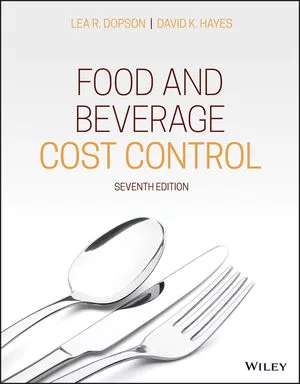Natural colors develop opportunities

During the past few years, a demand has emerged from consumers for transparency. Consumers are attracted to “clean” labels and want to avoid products that have complex ingredients and products that might be over-processed, explained Lynn Dornblaser, director of CPG trend insight at Mintel International, Chicago, during a presentation at the Institute of Food Technologists 2010 annual meeting in July.
In the United States, 56 percent of all product categories showed a decrease in the average number of ingredients per product from 2008 to 2009, she said. In 2008 and 2009, alcohol beverages had an average of less than five ingredients per product, while non-alcohol beverages had a little more than 10. Mintel reports a 2.4 percent decline in the average number of ingredients per product for all food and beverage categories.
With the average number of ingredients per product dropping in the U.S. marketplace, Mintel also is reporting an increase in ingredients that might be considered more natural, such as natural colors, flavors and sugars. The word “natural” has become a part of consumers’ health and wellness vocabulary, and, in turn, consumers are focusing more on natural nutrition, Dornblaser said.
Need for natural color
The market push for clean labels and easily understood ingredient lists is driving the interest for natural colors in beverages.
“Consumers are the driving force for the use of natural colors,” says Terry Geerts, application chemist at Sethness Products Co., Clinton, Iowa. “I have read that the term ‘natural’ is more significant than the term ‘organic.’ Organic is very well defined, and natural is not defined.”
Whether it is a large company that desires a new product line or a small company that is trying to gain consumer recognition, each employs natural colors to differentiate in a very competitive segment of the food industry, says Mark Goldschmidt, technical director at Sensient Colors Inc., St. Louis.
“Natural colors are not limited to the large, global beverage producers,” he says. “We see activity with regional and local producers as well. There has been a significant increase in the demand for natural colors over the past decade. Most demand is driven by consumers’ desire for clean labels, more simple labels and changes in the regulatory environment in Europe. Our Fusion Precise Natural Colors are the fastest growing products in our U.S. and global portfolio today.”
Most of the beverage companies Wild Flavors Inc., Erlanger, Ky., works with expect to see natural colors used in their formulations.
“The primary driver is the desire to offer products with clean labels, says Jessica Jones-Dille, Wild Flavors’ senior manager of industry trends and market research. “Other possible reasons include the potential health benefits of natural colors, improved technological performance and more affordability. Additionally, bad press around synthetic colors is pushing demand for natural alternatives.”
On July 20, the European Union drew more negative attention to synthetic colors by requiring products using azo dyes, including Red 40, Yellow 5 and Yellow 6, to be labeled as “may have an adverse effect on activity and attention in children.”
“It used to be that larger companies were only interested in synthetic colors and smaller or New Age beverage companies were interested in naturals, though some of those companies have grown to be quite large,” says Jeff Greaves, president of Food Ingredient Solutions LLC, Teterboro, N.J. “Now, we are seeing tremendous activity from large and multi-national companies to replace synthetic colors with naturals.”
D.D. Williamson, Louisville, Ky., also sees more beverage companies sampling natural coloring. Often small beverage companies rely on flavor houses for formulations, and the flavor houses source from natural coloring suppliers, says Campbell Barnum, the company’s vice president of marketing.
“Smaller companies continue to launch innovative beverages with product display panel listings like ‘no synthetic colors’ for differentiation,” he says. “We are noticing a pick up in interest from large beverage companies that have experienced or witnessed the European Union’s defacto ban in July of the Southampton Six colors - including Allura Red, equivalent to FD&C Red 40 - and wish to test naturally derived colors in U.S. beverages in case a change in synthetic color regulations were to develop here. So the large companies are exploring natural alternatives in case they’re needed. The large companies already use naturally derived coloring in some U.S. products, and now they’re testing them in others.”
Natural formulation
A larger percentage of new products are formulated with natural colors, but the greatest demand this year for reformulating is to replace artificial colors in Europe and markets that follow Europe’s regulatory lead, Food Ingredient Solutions’ Greaves says.
D.D. Williamson’s Barnum agrees that in Europe including the warning label of child hyperactivity caused many beverage and food companies to reformulate older products. In North America, beverage companies are mainly focused on launching new products with natural coloring rather than reformulating old products, although there’s an increase in the latter influenced by Europe, he explains.
Natural colors also are being used to modernize an older product or to improve a label, Sensient’s Goldschmidt says. For new products, natural colors differentiate products.
“Most of our customers believe that the conversion to natural colors is the right thing to do in light of consumer demand,” Goldschmidt says.
Technical advances in natural colors have allowed for better shades, stability and cost, making them a great fit for new product launches, Wild Flavors’ Jones-Dille adds.
Mixing synthetic colors and natural colors is another avenue some beverage formulators are taking, and can often achieve a unique product hue.
“Companies may mix the two types when trying to create a product that has a signature look,” Jones-Dille says.
Although Sensient doesn’t see a great deal of mixing of synthetic and natural colors, some customers might ask for a mix to achieve a more desirable blue shade, which is hard to achieve via natural colors alone.
Companies that only want to use a limited number of synthetic colors might find only a limited shade palette remains and even those colors might not be stable, Food Ingredient Solutions’ Greaves says. For example, Red 3 is fuschia, but it has very poor light stability. On the other hand, you can get much more stable fuchsia colors from purple sweet potato, red cabbage and acid-proof cochineal colors, he explains. Some customers will use naturals with Blue 1 to get a variety of shades such as a stable non-browning grape color, Greaves says.
Natural colors also may be used in products that include synthetic colors because some of the anthocyanin and carotenoid color additives on the ingredient statement may be appealing to consumers for their nutraceutical properties, though the dosage usually is too small to have much impact, D.D. Williamson’s Barnum says. Another reason is the finished color blend’s hue may not be achievable using synthetic color additives alone, he says.
Almost every natural color has its own unique set of limitations, and each beverage may pose a unique challenge. Color performance is dependent on a number of factors, including the product base, vitamin and herbal content, pH and packaging, Jones-Dille says. Some natural colors like anthocyanins are sensitive to certain types of acids, such as ascorbic acid, Greaves says. Many natural colors will react with positive metal ions, such as calcium and iron, changing the color or decreasing the stability. Some, like many carotene emulsions, are difficult to use in sports beverages and alcohol beverages because of emulsion stability, he says.
“Formulating with the end color target in mind during the development process is a good way to address these considerations,” Jones-Dille says. “Consulting with a color provider is the best way to ensure success for beverage developers.”
Most naturally derived colors perform best in acidic beverages, Barnum says. For example, anthocyanins, which may impart red to purple red hues in foods with lower acidity, are most stable below pH 3.5. Carotenoid-based colorings, like beta-carotene, also have improved stability at lower acidity levels.
“These two categories of colors are widely used in novel beverages,” Barnum says. “Many of these beverages also contain an abundance of vitamins and depending on the type, these vitamins may have a beneficial or disadvantageous effect on colors. The stability of carotenoid-based colors increases with the addition of vitamin C, while anthocyanin stability decreases.”
Choosing naturally derived colors that impart red hues for dairy-based beverages also may be challenging, he says. Anthocyanins, by chemical nature, change hue in response to changes in acidity. At the natural pH of yogurt and milk, anthocyanins will have a purple or bluish hue, respectively, rather than red and their stability is greatly reduced. In contrast, red beet exhibits a red hue across the board independent of the typical pH range of foods. However, red beet is susceptible to heat induced degradation limiting its use, Barnum explains.
Years ago, all caramel colors were considered “natural” as compared to the synthetic colors, Sethness Products’ Geerts says. Currently, different companies have varying definitions for natural.
“We typically ask the company to supply us with their definition then we respond as to the status of a specific caramel color,” Geerts says. “Most companies agree that Class One caramel colors are natural, however opinions vary for the other classes. With some companies, the GMO status is a factor.”
When companies limit natural to Class One caramel colors, it generates limitations, he says. Class One caramel colors are not stable when used with strong acids such as phosphoric. Some Class One caramel colors work with organic acids though. Most caramel colors are tolerant of pH ranges from 3 to 10; however, the other constituents in the final product may cause problems, he says. Some caramel colors are stable in high salt concentrations, while others may be stable in high alcohol concentrations.
Many different caramel colors are available to work with, and it is important to match the caramel color with the application, Geerts says.
Overcoming challenges
Natural colors derived from fruits, vegetables and other plant sources, are more susceptible to degradation from heat, light and other additives than synthetic colors. Some of these challenges can be overcome by careful product and packaging design. High-temperature, short-time heating followed by immediate cooling is appropriate for natural colors, D.D. Williamson’s Barnum says.
“Since natural colors are susceptible to degradation by heat and light, protecting the finished product from extreme heat and minimizing light exposure will improve product performance,” he says. “Often times, manufacturers will use sleeve wraps on beverage containers or UV absorbers to protect the natural colors from light exposure.”
Incorporating vitamin C into beverages also will cause anthocyanins to fade, Barnum says. Some manufacturers offer encapsulated vitamin C as a solution to minimize this effect.
Some vegetable-based colors may provide more flavor impact than others in a beverage, Jones-Dille says. “Blending with fruit-based colors can help reduce this effect,” she says.
It can be a challenge to incorporate lipid soluble natural colors into a water-based beverage system, due to the insolubility of oil in water, Sensient’s Goldschmidt says. Emulsion technology is employed to achieve a target particle so that the lipid soluble colorant remains dispersed in the water-based beverage.
Water-soluble liquids and powders or water-dispersible emulsions, dispersions and powders are two color product forms that are used in beverage formulations. Water-soluble liquids, water-dispersible emulsions and dispersions are pre-solubilized thereby eliminating any issues when incorporating them into beverages, Goldschmidt says. This is a requirement for an efficient manufacturing operation, he says. When using soluble powders, solubility limits must be considered. However, typical beverage usage rates do not exceed the solubility rate of natural colors, even to achieve intense colors. When working with water dispersible powders, such as beta-carotene powder, it is often best to make a dispersion or emulsion to disperse the color prior to adding it to the beverage batch, Goldschmidt says.
Consumer demand for transparency in beverages led to Wild Flavors’ investment in the development of clear emulsions. Obtaining clarity in beverages, specifically with orange and yellow colors, has posed challenges to developers in the past, Jones-Dille says. For example, turmeric provides a vibrant yellow shade, but is unstable in the presence of light and annatto is not acid-stable. Other carotenoids provide the best option for stability, but as they are oil soluble in nature, they traditionally come with some haze due to carriers or emulsifiers, she explains.
Wild Flavors developed patent-pending technology that delivers water soluble, acid-stable orange and yellow colors without opacity. The company’s clear beta-carotene, apo-carotenal and paprika emulsions complement Wild Flavors’ Colors from Nature line providing clarity in beverages, Jones-Dille says.
The company also developed an acid-stable blue color ideal for use in both food and beverage products. Naturally derived from fruit, Wild Flavors’ acid-stable blue color delivers various shades of blue, but also provides the foundation for other colors, such as green, purple and black, Jones-Dille says.
D.D. Williamson also recently launched an acid-proof, Class One caramel color and a certified organic, acid-proof caramel color. In 2009, the company launched naturally derived beta-carotene that is suitable for juice drinks. A few years ago, the company launched a purple sweet potato coloring, which can be labeled “vegetable juice for color.” Sales of this anthocyanin coloring continue to increase both as a straight color and a blend with other natural colorings in beverages, Barnum says.
Sensient’s Fusion Precise Natural Color product line continues to expand with the introduction of new natural color shades for all applications, Goldschmidt says. The company continues to advance the stability found in its carotenoid emulsions and anthocyanin-based dispersions and liquid colors. Fusion Precise Natural Colors are pre-dispersed and emulsified, using manufacturing procedures that ensure stable emulsions that will not separate over time, he says.
Food Ingredient Solutions’ newest product line is its FISclear line of natural micro-emulsion colors. FISclear emulsions rely on non-genetically modified emulsifiers and proprietary processing techniques to produce emulsions with particle sizes in the 50 to 100 nanometer range for clarity, stability and shelf life, the company says. At this particle size range, emulsions are often stable for years and can even be used in some applications that have proven problematic in the past, such as alcohol beverages, Food Ingredient Solutions says.
The initial color and extract product line includes astaxanthin, beta-carotene (natural and nature identical), apo-carotenal, carrot oil, lycopene, palm carotene and paprika micro-emulsions. These colors and extracts provide a wide range of shades from pale to greenish yellow, through various peaches and oranges and pinks to a rich, deep red and are ideal for use in beverages, the company says.
Using FISclear emulsion technology, Food Ingredient Solutions also developed a line of stable, transparent folded flavor oils, ideal for applications such as flavored waters. The initial flavor oil offering includes Valencia orange oil, grapefruit, lemon and lime emulsions.
Although the preliminary product lines have colors, extracts and folded flavor oils as individual products, Food Ingredient Solutions can offer color/flavor/extract combinations to suit individual customer requests, such as a folded orange oil together with a transparent natural orange color, it says. BI
Related Links: Beverage R&D: Flavor innovation grows reach
Special Report: Health & Wellness
Beverage R&D: Delivering on a functional promise
Looking for a reprint of this article?
From high-res PDFs to custom plaques, order your copy today!






